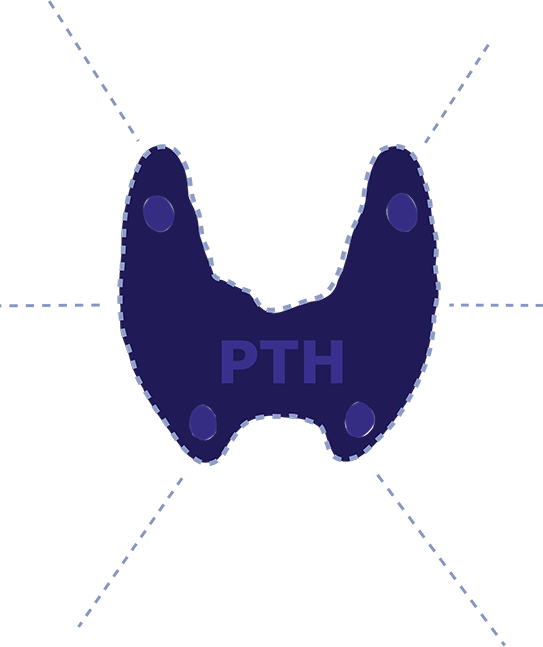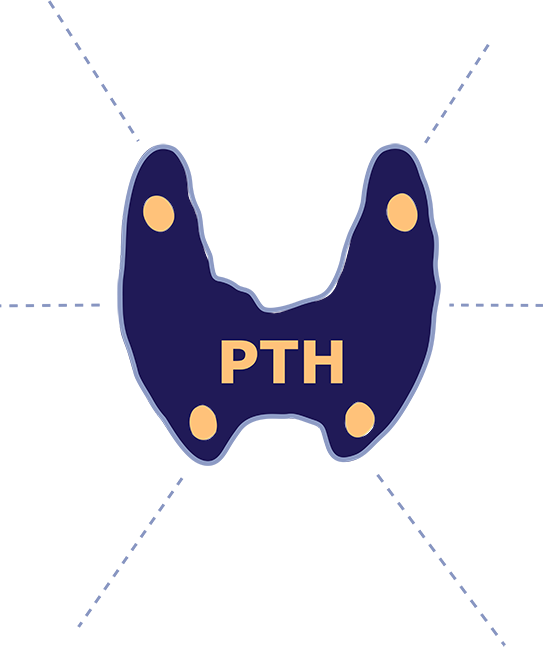







CENTRAL NERVOUS
SYSTEM
Seizures are a potential consequence of hypoparathyroidism6
CARDIOVASCULAR SYSTEM
Cardiac arrythmias are a potential consequence of hypoparathyroidism6
RENAL SYSTEM
Nephrocalcinosis is a potential consequence of both hypoparathyroidism and the conventional therapies (oral calcium and calcitriol) used for treating the disease6
MUSCULOSKELETAL SYSTEM
Myopathy is a potential consequence of hypoparathyroidism6
SKELETAL SYSTEM
Patients with hypoparathyroidism have decreased bone turnover, resulting in consequences on bone microarchitecture6
GASTROINTESTINAL SYSTEM
Without PTH around to promote the synthesis of calcitriol (active vitamin D) in the kidneys, the intestinal absorption of dietary calcium is reduced in hypoparathyroidism6
HYPOPARATHYROIDISM:
ONE
DISEASE.
MULTIPLE
CONSEQUENCES.1-4
Connecting missing PTH to the constellation of effects on multiple organs.5,6
Hypoparathyroidism is a rare disease that goes beyond hypocalcemia; it has a variety of etiologies and can be linked to multiple comorbidities.3-5
Conventional therapy does not address the underlying pathophysiology of insufficient PTH levels.6 A greater understanding and identification of the symptoms impacting physical functioning and well-being can make the difference to a patient.7

Understanding hypoparathyroidism
Hypoparathyroidism is a rare endocrine disease characterized by the absence or the insufficiency of PTH, which can impact patient well-being.7,8
LEARN MOREIdentifying consequences of PTH deficiency is IMPORTANT
In hypoparathyroidism, a discrepancy between lab values and patients' symptoms may occur with conventional therapy.8-10
LEARN MOREPrioritize shared decision-making
When facing the daily impact of their disease, patients may not link their daily symptoms to hypoparathyroidism, which can lead to gaps in perspective when making treatment decisions.7
LEARN MORE

